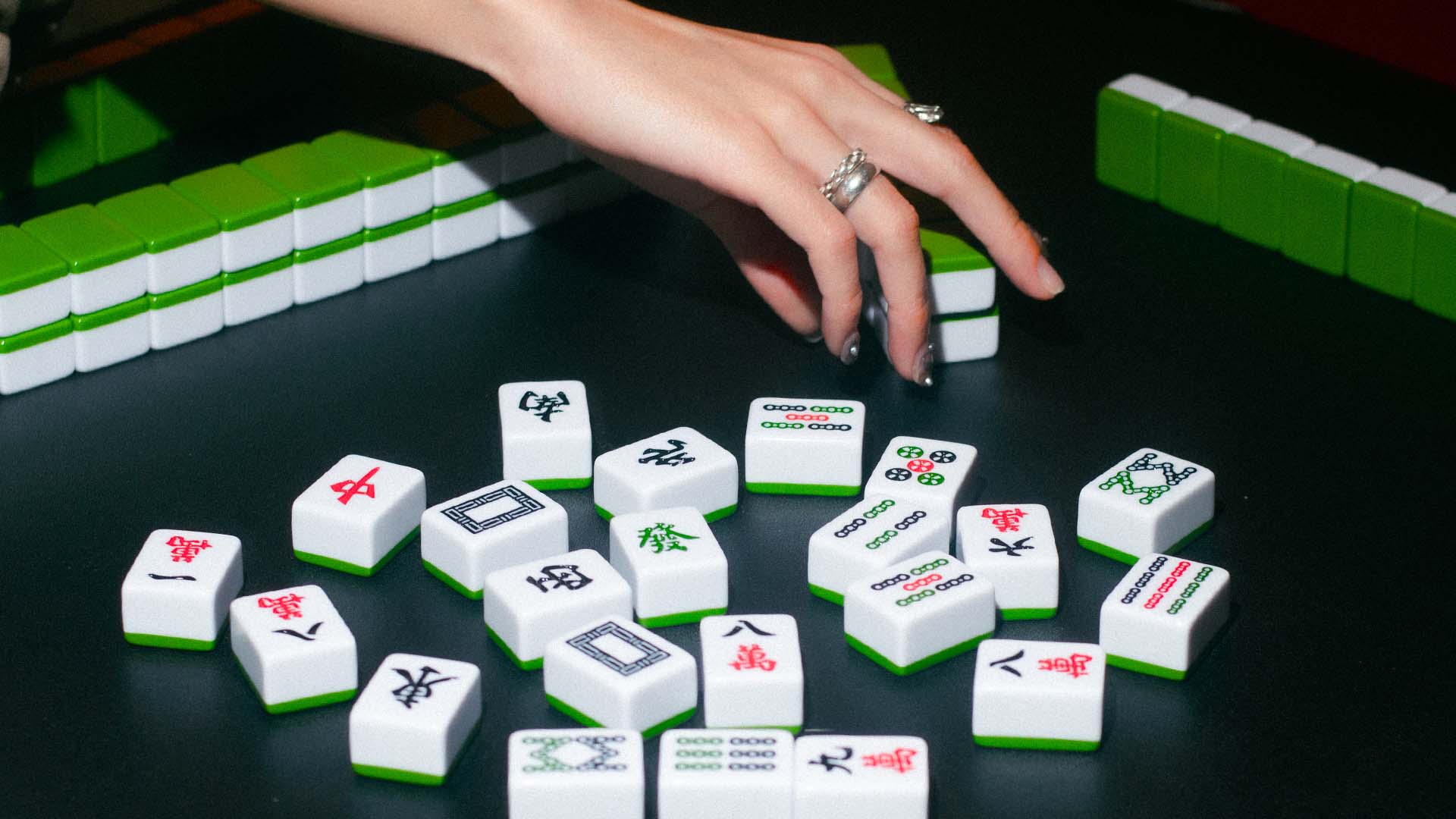At a monthly mahjong gathering, a new generation of players finds community through the centuries-old game.
Images by Vincent Bercasio
On a recent Tuesday evening, as I drove to Arts & Letters Nu‘uanu in Chinatown, I told my mom over the phone that I was going to play mahjong. There was a pause on the line.
“What?” she asked.
“Mahjong!” I said.
“Why?”
“Why not?”
She didn’t ask any more questions. Of all the activities that she hopes to hear I’m doing when I call her — studying investment strategies, cooking dinner for a prospective husband, reading Eleanor Roosevelt’s biography — mahjong has likely never crossed her mind.
I am slightly worried myself, partly because I’ve never played, but also because of the mahjong event’s name: Bad Luck Club. I am my parents’ daughter and I may have internalized some of their superstitions. The name, says Cassie Louie, co-founder of the monthly gathering, is in some ways a pushback against the philosophy in many Asian families where “everything has to be prosperous and fortuitous and good fortune and all the good things. But this is a space to just mess up. It’s fine.” She continues, “we’re playing [mahjong] probably not as perfectly as our ancestors would have loved it, but it’s OK. We play it kind of shitty, but this space is safe for everyone to play in their own way.”

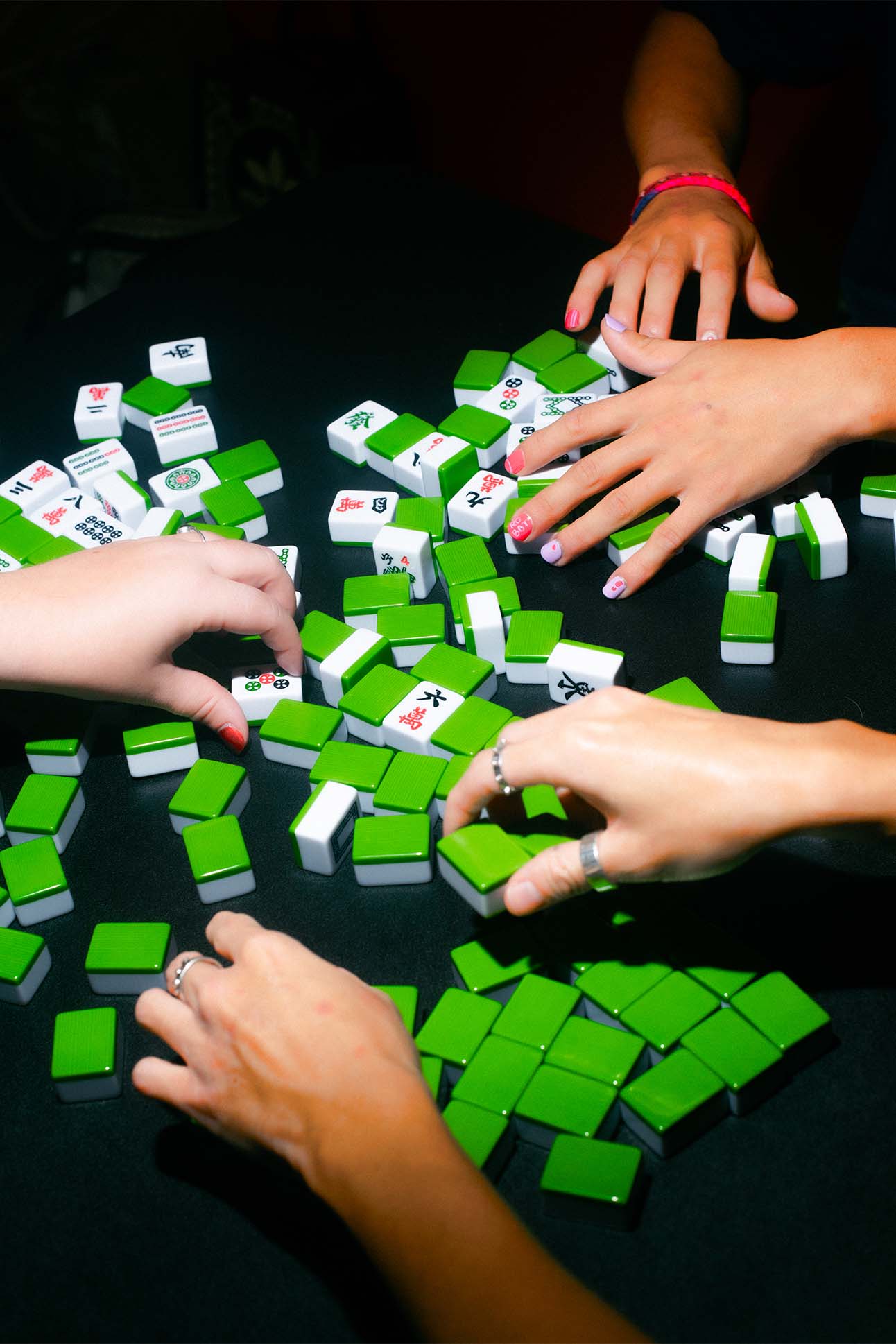
Inside Arts & Letters’ long and narrow space, with Cantonese pop from the ’80s and ’90s playing, Louie arranges a table laden with snacks and takeout from Mei Sum, the dim sum restaurant next door. Six square tables, each for four players, have been laid out, with the beginner tables in the front, the more experienced towards the back. As the novices, including me, take our seats hesitantly, people in the back are already shuffling their tiles, and the room fills with the soft clicking of the pieces against each other.
Usually, about 40 people turn out. Its organizers never expected this word-of-mouth event to be this popular. Louie says it all started on New Year’s Eve, when her friend and former co-worker Dane Nakama, came to her house and they began to play with her grandmother, an avid player — Louie drops her grandmother off at friends’ homes in Chinatown for weekly mahjong dates, where Louie guesses her grandmother plays about 200 games from 9 to 5 p.m. “I’ve always wanted to learn, but I couldn’t because my grandma can only speak Cantonese, and my Cantonese is so broken.” Nakama was able to explain the rules in English and “I was finally able to bridge the language and understand how to play.”
In March, inspired by the massive mahjong parties in LA hosted by the Mahjong Mistresses, boasting guest lists hundreds of people long, Louie and Nakama launched their own gathering at Fishcake, the dual interior design store and art school where they both worked. But they quickly outgrew the space and moved to Arts & Letters in October. From the looks of it, they’ll soon outgrow this venue, too.
We’re playing mahjong not as perfectly as our ancestors would have, but it’s OK.
Cassie Louie, Bad Luck Club co-organizer
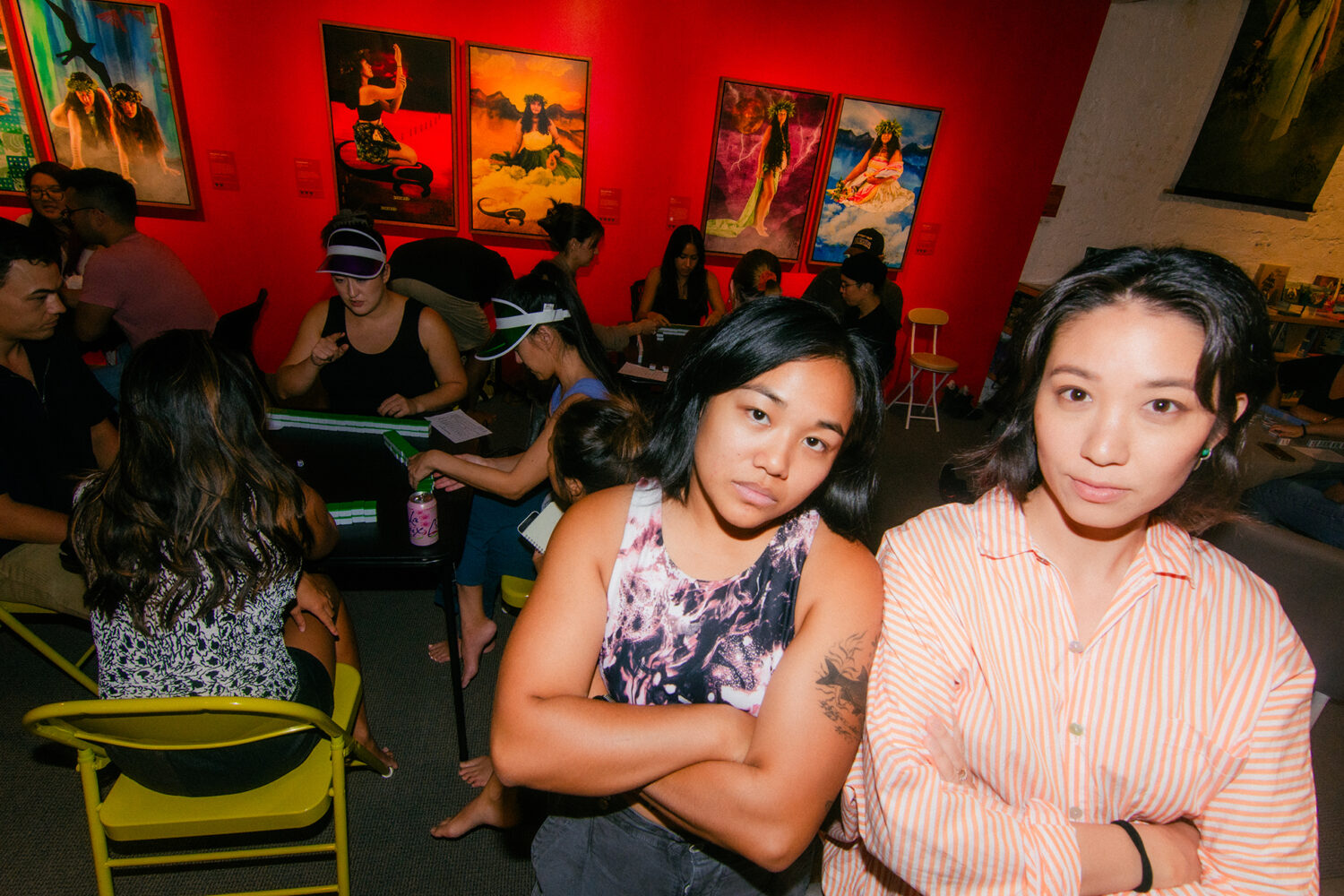
Louie thinks that coming out of the pandemic, “people don’t necessarily want to go out drinking or to restaurants, and this was an event where people could gather and socialize without spending a lot of money.” She’s been surprised at the turnout, but has found many people share similar stories as hers, of watching their families play but never learning themselves. For many, playing mahjong is “reconnecting with some part of their past,” she says.
Some, like Laura Zen, have been playing since they were young (in her case, since she was 10 years old). “We played more as my grandparents got older, to test their memory. It brought the family together,” she says. In addition to attending Bad Luck Club events, she plays every week at home, having introduced her friends to the game. “When you ask them do you want to play mahjong, they’re like, isn’t that for old people? Then you get them playing and you get them addicted.” But it’s more than the game itself. “I see my friends a lot more often, we’re not on our phones, we’re not distracted. I have a lot of fun because we’re just laughing and talking, it’s very intimate.”
She plays with a mahjong set that she guesses is 50 years old, its resin tinged yellow with age. When she first started coming to Bad Luck Club, “it was shocking because every family we realize plays a little differently.” Mahjong, it turns out, like language, has many dialects, with variances among families and countries. Players in Singapore, for instance, play with different rules than those in Taiwan or the Philippines. Joy Sanchez, who organizes the events with Louie, plans on bringing her mahjong set to the Philippines and to play with family.
Others at Bad Luck Club have no familial or cultural connection to mahjong. They are propelled by a simple curiosity for the game — and, I hear a few times, inspiration from the pivotal mahjong scene in the movie Crazy Rich Asians. The most common refrain I hear among those who have not inherited the culture is that they played once and then immediately bought a set. And once you have a set, you need three more people to play, and so it spreads — to the Servco lunchroom where one attendee works, to an oil tanker where another spends 45 days at sea. To play at Bad Luck Club is to witness the virality of a physical game, its popularity measured in the people in front of me, the shouts of “pon” and “chi” and “mahjong” as matches and sequences are made and games won, followed by the clacking of tiles being reset.

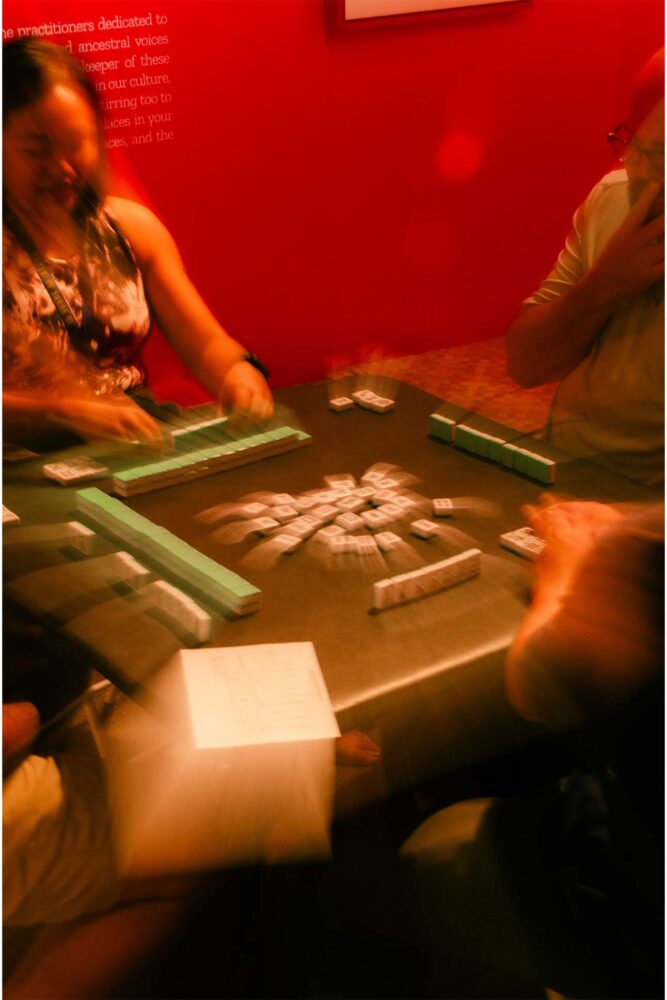
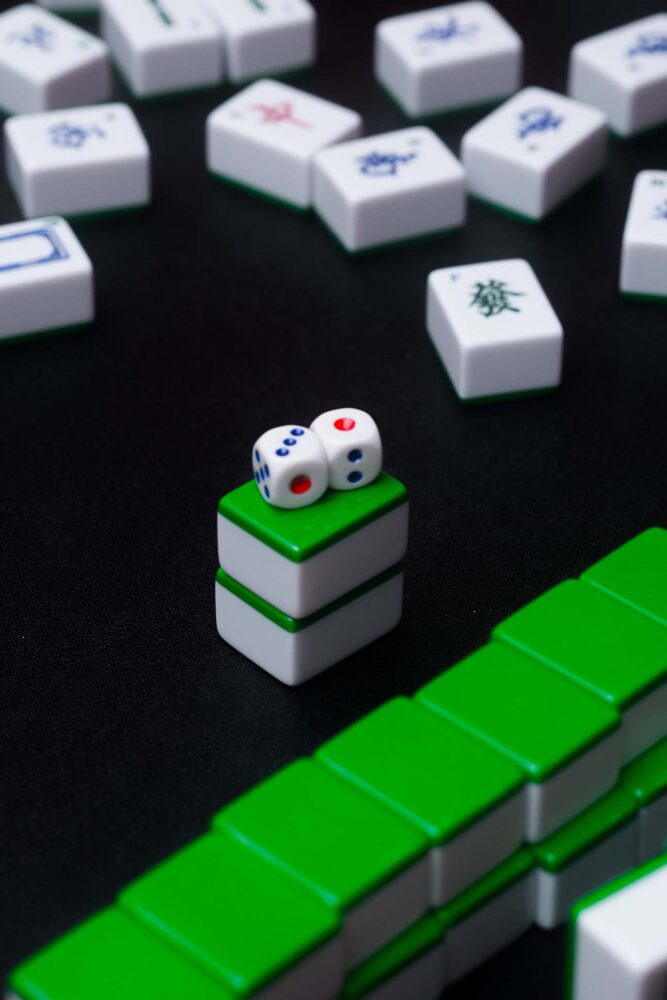
I don’t think it’s a coincidence that Bad Luck Club and Mahjong Mistresses were started by creatives. More than card games, mahjong is such a tactile and visual game, each tile smooth and cool and pleasant to hold, and many sets striped like layered jello, in hues of jade green or lavender or a Tiffany’s-esque blue (for a real Tiffany’s blue, a Tiffany & Co. mahjong set is available for $15,000).
It’s these tactile qualities that draw me into mahjong, as someone in the middle of the mahjong exposure scale — never having played it or even seen any of my family members play, but feeling the pull of my cultural heritage. And what keeps me here (and seeking my own mahjong set) is much the same as others in the room: a physical camaraderie that feels increasingly elusive in the world, and the game itself, wherein I can imagine infinite possibilities, of strategy, of joy, of luck, both good and bad. For how are you to ever recognize the good if you never know its counterpart?

